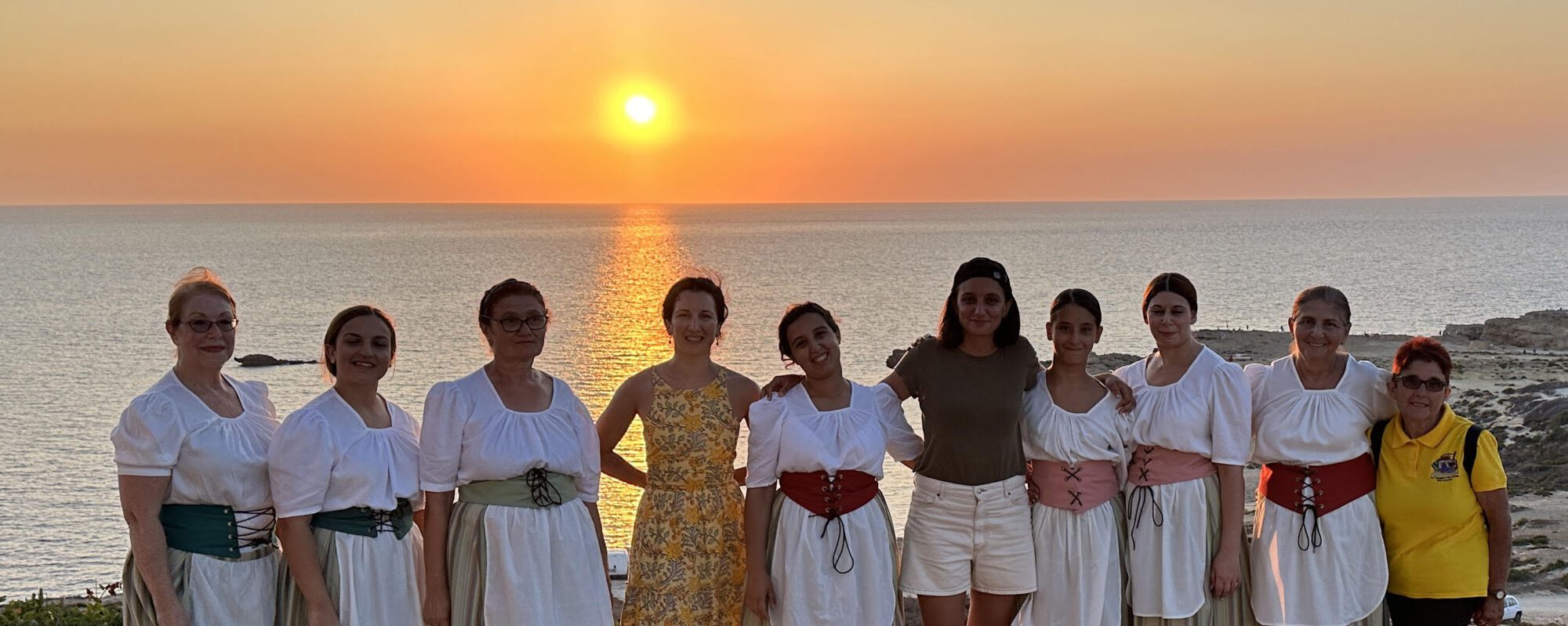Fenkata, Maltese rabbit stew, is a delicious cultural staple. Jonathan Firbank explores the boozy chemistry behind its deliciousness and the dramatic history behind its cultural significance.
In my home country, far from Malta, I always found rabbit to be an awkward ingredient. It is one of the few readily available meats often caught wild, a laudably sustainable practice given that rabbits breed like, well, rabbits. But my tastes have been coddled by farm-bred livestock. I don’t find rabbit ‘just like chicken’, as so many say, no matter whether it’s wild, or domestic like most of Malta’s supply. It’s lean – and tough if overcooked even slightly. It has a challenging gaminess that isn’t offset by its otherwise mild flavour. From time to time, it also comes with a shotgun pellet or two. That certainly increases its iron content but makes the already finicky preparation an even bigger pain. Once all is said and done and the meat is prepared, you are left with a small carcass that looks like a child’s nightmare and yields less meat than is obtainable from the nearest pigeon.
Put simply, I don’t like rabbit. But I love Maltese rabbit stew. Trying it for the first time was a revelation. Where my palette expected cloying gaminess, it instead found sweetness. Where there should have been rubbery strips of meat, there was fall-from-the-bone tenderness.
Where I come from, rabbit stew has ‘unwritten laws’. The peculiarities of the meat’s taste must be masked by acrid tarragon and muted by cream – still unmistakably there, just partially buried. Malta’s stew, on the other hand, transforms the star ingredient. Stuffat tal-fenek, better known as fenkata, is fruity, sweet, and a little sour. It’s clean-tasting instead of heavy. The best of the Mediterranean is on display: the holy trinity of olive oil, onion, and garlic, combined with tomatoes, red wine, and all the herbs that place the region’s food amongst the world’s best. There are enough other vegetables to make a second portion seem a healthy proposition, and all the above combined improve the experience. And you can serve it with spaghetti!

Chemistry from a Winery
Why is eating this stew such a good experience? The answer, as to many things, is ‘wine’. Fenkata’s preparation begins the night before it is eaten. The meat is marinated in red wine along with punchy aromatics – herbs, spices and garlic – overnight. This is a key difference from many other rabbit recipes.
The ethanol molecules in wine bind with both water and fat, releasing aromatic compounds, as ethanol does in perfume. These airborne odour molecules, ‘odorants’, stimulate the nose’s sensory cells just as ‘tastants’ stimulate the tongue’s, creating the tandem neural responses that inform taste. The longer the marination, the longer this chemical reaction can take place. Ethanol dissolves the rabbit’s fats, the source of its gaminess, and keeps them emulsified in the stew’s water, making it yet more likely that the fat will be experienced as a pleasing aromatic compound rather than in isolation.
Wine isn’t just alcohol, of course; it also contains acid. This tenderises the rabbit by breaking down its proteins. Many meats don’t stand up well to a caustic, 24-hour marinade for this reason. Rabbit, however, is just lean and tough enough to be perfect for one. All of these chemical reactions are also happening to the plant-based aromatic ingredients throughout the process, bringing out the best of their flavour.
Additionally, they are happening to the unsung heroes of fenkata, the liver, kidneys, and heart that are marinated with the muscle meat. Don’t let the offal put you off. Again, the gamey flavours and less pleasing textures are eradicated, leaving a deep and complex umami flavour. They also bring a ton of vitamins, minerals, and antioxidants to the dish – it may be a placebo effect, but I always feel great after eating them.

Once the marinade is done, the rabbit is removed and fried, adding hundreds more flavour compounds via the Maillard reaction. This is commonly known as ‘browning’ the meat, a chemical reaction between amino acids and sugars that depends on high, dry heat. The rabbit is then stewed with a mix of tomato and the now flavour-infused wine. Most readers will have enjoyed a tomato sauce cooked with alcohol. It’s a staple because the ethanol solvates odorants from the tomato that aren’t accessible without it. The tomato along with the vegetables also provide sugars that mitigate the acidity. With just the right amount of salt, the end result is perfectly balanced.
The Importance of Rabbit
Like any great dish, fenkata is loaded with chemistry. But as with any great dish, it wasn’t invented in a lab. Necessity is the mother of invention, which has resulted in some of the greatest flavours coming from deprived places. Historical examples include flavours pioneered by the victims of slavery in the US, or by China’s peasantry. Fenkata is cut from the same cloth.
As UM’s Prof. Carmel Cassar recounts in Fenkata: an emblem of Maltese peasant resistance?, Malta’s peasants dined on a proliferation of wild rabbits until the 18th century, when the Knights of St. John imposed draconian, if inconsistent, restrictions on rabbit hunting. This criminalised a key source of protein for the peasants, as well as criminalising vital pest control; rabbits are notorious for eating crops. This culminated in protest, civil disobedience, and even a short-lived insurrection. Consuming rabbit acquired the symbolism of resistance and survival, enshrining itself in Maltese culture. Today, a fenkata isn’t just a dish, it’s an event, one that has a communal significance beyond the already massive significance of a family meal. This is because its history is one of community – the interdependence of Malta’s peasantry and the unifying us-vs-them solidarity they found against their rulers.
The best example of fenkata’s cultural status can be seen at Malta’s greatest national festival. L-Imnarja is a direct continuation of a festival from pagan, ancient Rome. The event, like so many others, was co-opted by late-Roman Christianity and had become a Catholic celebration by the time the knights brought it to the island. Each year, the celebration featured an amnesty on hunting and consuming rabbit. This was a lifeline for the oft-malnourished peasantry, so much so that rabbit itself became the next cultural juggernaut to lay claim to the festival. For centuries since, it has taken centre stage at each Imnarja.
Of course, there are many dishes around the world that are inextricable from a national holiday. What sets fenkata apart is that an ingredient is celebrated instead of a recipe. This has allowed the dish to grow. 17th-century peasants weren’t concerned with molecular gastronomy and didn’t have access to today’s ingredients. Malta was one of the last places in Europe to make potatoes a staple food, for example. But because the cultural weight of the dish lies in the rabbit alone, all its other elements were free to be refined through trial, error, and experimentation until the mid-20th century, keeping pace with the evolution of Mediterranean cuisine. The end result is a complexity of technique and flavour that is more than a match for its challenging meat: the irreplaceable fenek that rich and poor fought over hundreds of years ago.
In fact, I take back what I said earlier. I like rabbit.





Comments are closed for this article!